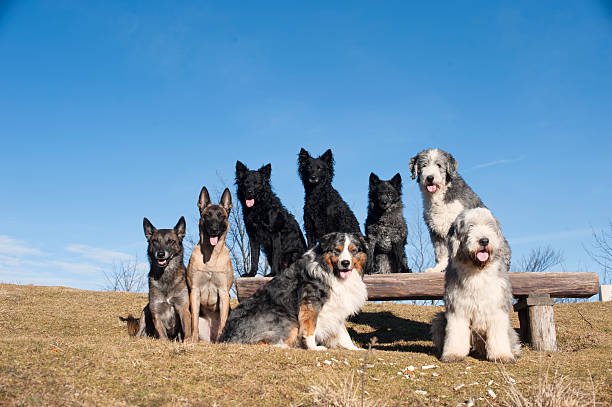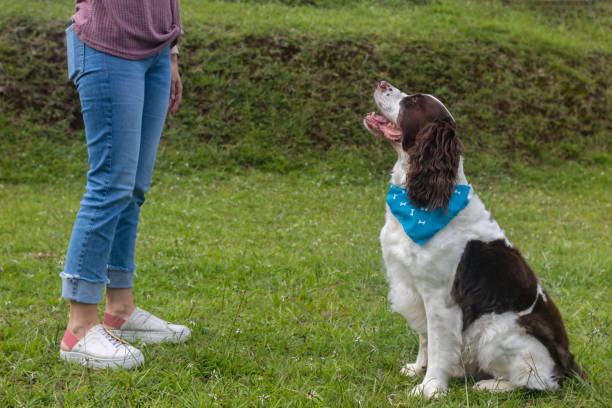Dog training is seen as a captivating topic to many due to valid reasons. What’s wrong in spending time to educate your dog with basic commands? The perfect method to train them is by applying the “dog whistle command.” This technique involves using your voice note and body gestures to signal your pet when it’s time to approach you or when to stop barking.
There are many ways to train dogs: from old-fashioned methods like food rewards, which work on all but highly aggressive animals, to newer approaches such as clicker training. But for most people who don’t have lots of time or patience, teaching their dog simple commands may be an ideal solution.
The “dog whistle” technique takes advantage of one important fact about dogs: They can hear a much wider range of sound than humans. The part of the human ear responsible for picking up higher frequencies, the “dog whistle” region, can detect sounds up to 45,000 Hz, or roughly 30 times higher than what most people are capable of hearing. But dogs have responded at even higher frequencies (up to 45,000 Hz) and even more remarkable ranges.
So when you blow a whistle or give your dog a verbal command at the high end of its hearing range (32-45 kHz), it can hear that sound just fine. It also won’t hurt your pet’s ears at all. Plus, since most humans can’t hear those sounds, you’ll benefit from not bothering anybody else.
In fact, it turns out that dogs can not only hear these high-frequency sound waves but also respond to them better than normal vocal commands – simply because they are different and surprising. Other techniques like clicker training require more time and patience, as you have to shape the behaviour in small steps. But a dog whistle can quickly tell your pet that it needs to pay attention.


The next step is to teach your dog to respond when you blow this high-frequency sound, which isn’t hard either. You associate that whistle or noise with something good (like food, attention or a treat). Eventually, your pet will learn to pay attention when you give that particular signal.
For example, let’s say you want to teach your dog to come upon command. Blow the whistle and immediately follow it with a special treat that your canine friend loves (like canned food). Later, reinforce the sound of the whistle with the treatment; even if the pet is already approaching you – he will likely learn to come closer and closer until he can actually reach you. Then it’s just a matter of teaching your dog to respond when you give the command without the whistle beforehand.
Of course, you’ll need a whistle for this technique to work well. If you don’t already have one, a typical ultrasonic dog training whistle costs only about $15, and it will work just fine for this kind of command training.


How to Teach Your Dog to Come Closer Using the ‘Dog Whistle Command’
One way to train a dog with this method is by using the “dog whistle command,” a term used to describe the human voice. Using this type of verbal command helps your pet understand that you want it to come closer. This is different from when you call out its name or stop calling entirely and wait for your dog to come back on its own.
It takes time and patience, but most dogs will learn these commands within two weeks or less.
A dog whistle allows a person to speak while at a distance from their pup. A common misconception about using a silent whistle is that it only works in one direction. The truth is that simple tones and specialized frequencies can control even dogs not trained to recognize it.


How Do I Teach My Pup the ‘Dog Whistle Command’?
First, you’ll need a dog whistle. There are many types, but it needs to be one that can produce different tones or frequencies. For example, if your pup only responds to a certain tone or frequency, you’ll want to use a dog whistle like this option: Dog Training Whistle.
Once you have your tool of the trade, find a wide-open area where you and Fido can practice together. This will allow your pet to run around freely without distracting other dogs, people, or animals.
Keep at least 20 feet between yourself and your pup to give it enough room to get used to the new training techniques. Blow the whistle a couple of times in quick succession until your dog’s attention is on you. Most pets will stop what they’re doing and look in your direction when they hear this sound, so be prepared!
You can reward the dog by calling its name and using a treat if it comes toward you. Try to go about 5 feet back each time to give your pup a little more room to roam as it becomes more comfortable with the command.
Once you have reached around 30 feet, start using a verbal “come here” command while pointing in the direction you want your dog to move towards. This will help it understand the relationship between the sound and moving in your direction. If your pup doesn’t respond immediately, use another whistle blast as a secondary method.
If you find that the sound of a dog whistle doesn’t work for your pup, there are other options to teach it the “come here” command too:
- Use a recording of someone whistling.
- Have someone else give the command and blow the whistle while your dog is looking at them. Repetition will help Fido associate the sound with moving closer to you.
- Use a command like “this way” or “follow me.”
Whatever training methods work best for you and your pet, remember that patience is key! Give Fido time to respond, have treats on hand (most dogs will come when they hear the word “cookie”), and reward the pup for a well-done job! The goal of this training is to get your dog to come towards you in any environment, even when it’s not running around in an open space.


How Do I Use the ‘Dog Whistle Command’ with Other Dogs?
Whistling can help Fido learn to behave in different settings when paired with other dogs and people. If you have a friend who has a dog, for example, practice with both on leashes to see if your pup can differentiate between the two of you.
If your pet becomes aggressive around other dogs when it hears a whistle blast, try using the command just before they start growling or barking. This way, Fido will associate the sound with a positive reaction.
If you run into problems or would like to speak with someone who has more experience in this area, contact a professional dog trainer in your area.
Benefits of Teaching Your Pet This Command
Training your dog to come closer and stop barking can have many benefits. One of the main benefits is that you will control demanding situations when you need to. Another benefit is that training your pet with this command will teach it how to do other commands, such as sit and stay.
One of the most important aspects of training your pet is being polite and having good manners when speaking to or about others. A fun way to teach this is by using a “dog whistle command.” When you use this command, your tone/body language will signal your pet that you want them to come closer or stop barking.


Conclusion
It’s important to note that dog training commands can be used with other dogs, but not in the same way as they are trained for humans. When working with another canine, you should use a softer voice and say “come” instead of raising your volume and yelling. This will allow them to understand what you want from them without feeling attacked or threatened by an aggressive command.


